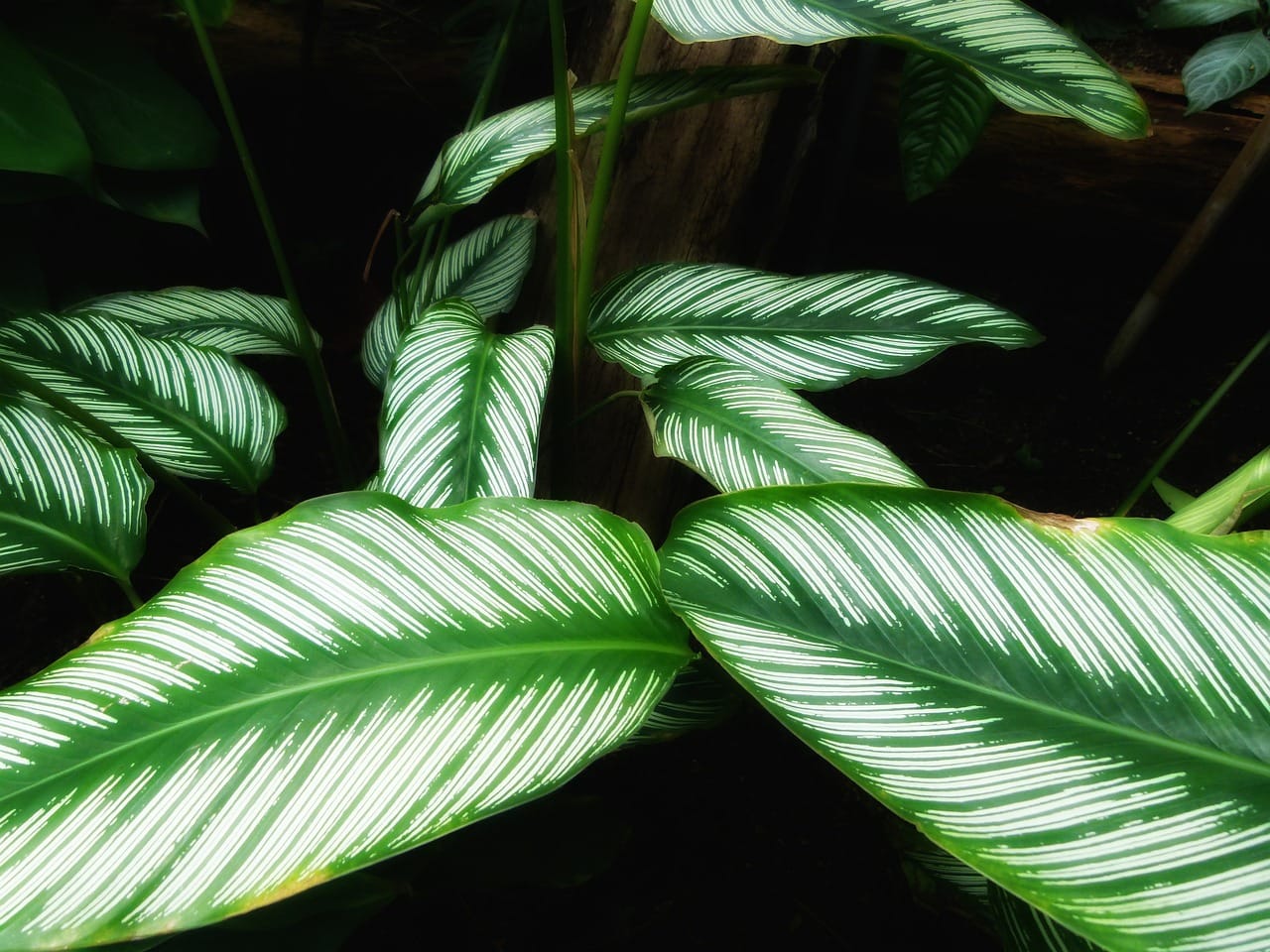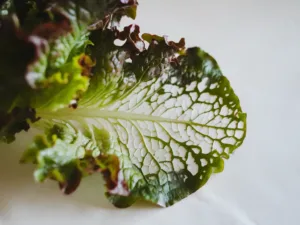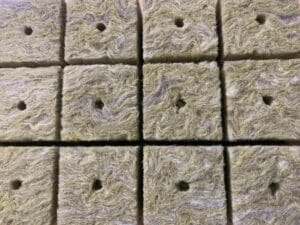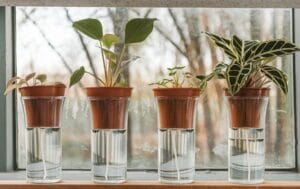Why Calathea is a Special Choice
The Calathea, also known as the Prayer Plant, is one of the most fascinating indoor plants you can imagine. Its stunning, vibrant leaf patterns and unique daily movements make it a real showstopper. In its native home, the tropical rainforests of South America, the Calathea thrives in humid, shady conditions – an atmosphere you can recreate in your own home. With hydroponic techniques, you can create an ideal environment for your Calathea to reach its full potential. It’s essential to understand that Calathea is considered a true “Drama Queen” among plants – it loves things to be just right and will quickly show signs of discontent. But with the right knowledge, caring for this plant can be an absolute delight!
The Best Calathea Varieties for Your Home
Not all Calathea varieties are the same – some are easier to care for, while others require your full attention. If you choose hydroponic growing, you should select varieties that adapt well to this specific environment. Here are some of the best options:
- Calathea orbifolia: With its large, round leaves and silver-green stripes, Calathea orbifolia is one of the most popular varieties. It requires consistent moisture and thrives in a warm, stable environment.
- Calathea makoyana: Also known as the “Peacock Plant,” it has an impressive leaf pattern reminiscent of peacock feathers. This variety prefers slightly moist conditions and tolerates indirect light well.
- Calathea lancifolia: The “Rattlesnake Plant” has long, narrow leaves with wavy edges and dark spots. It is more resilient to temperature fluctuations and suits hydroponic systems well.
- Calathea zebrina: With its velvety look and zebra-like stripes, this variety is a true eye-catcher. It loves particularly warm, humid conditions, making it ideal for hydroponic cultivation.
- Calathea roseopicta: This variety offers a variety of colors, from deep green to rich burgundy. It demands regular care, but its beauty makes the effort worthwhile!
The Ideal Hydroponic System for Calathea
If you want to grow your Calathea hydroponically, choosing the right system is crucial. Calatheas are known for their high demands on moisture and aeration, which makes them ideal candidates for specific systems:
- Deep Water Culture (DWC): This system provides the plant roots with continuous access to oxygenated water. For Calatheas, which love steady water availability, DWC is an excellent choice. Ensure the roots receive enough oxygen to avoid rot.
- Ebb and Flow System: In this system, the plant roots are periodically flooded with water and nutrients and then allowed to dry out. It is perfect for Calatheas, which benefit from regular but not constant moisture. Here, good drainage and root aeration are essential.
Each of these systems has its advantages. If you’re ready to invest a little extra time monitoring nutrient and water levels, your Calathea can thrive beautifully.
Starting Calathea in Hydroponics: The First Step to Success
Before placing your Calathea in a hydroponic system, start with proper cultivation. Success often lies in the details – and with Calathea, these details are especially important. Start by choosing high-quality plants or cuttings. You can propagate through seeds or by dividing the root clumps, though the latter is often faster and more efficient.
- Select the right substrate: Rock wool or coconut fiber is excellent for cultivating Calathea, as these materials provide good water retention and aeration. Ensure the substrate is sterile to prevent diseases.
- Germination boxes: Place the seeds or cuttings in a germination box that maintains high humidity and a constant temperature. Calathea seeds germinate best at temperatures between 22 and 26°C. Keep the substrate consistently moist but avoid waterlogging.
- Transition to the hydroponic system: Once the roots are strong and the plant has developed several leaves, transfer it to your chosen hydroponic system. Ensure the roots receive adequate oxygen and gradually adjust the nutrient solution to promote growth.
| Step | Description |
|---|---|
| Substrate Selection | Use rock wool or coconut fiber for good water retention and aeration. |
| Germination Boxes | High humidity and constant temperature between 22 and 26°C. |
| Transition to Hydroponics | Once roots are strong and the plant has leaves, transfer to the system. |
The Right Substrate for Calathea in Hydroponics
The choice of substrate is a crucial factor for your Calathea’s wellbeing. Since these plants prefer roots that are well-aerated yet retain some moisture, some substrates are better suited than others:
- Expanded Clay: A very popular substrate in hydroponics. Expanded clay has excellent drainage and yet retains enough moisture. Perfect for Calathea, which shouldn’t stand in stagnant water.
- Rock Wool: Rock wool offers excellent water retention and airflow. It is sterile, which helps prevent the spread of disease.
- Perlite & Vermiculite: Light and well-aerated, perlite is ideal for mixing with other substrates like vermiculite. The excellent drainage of perlite combined with vermiculite’s water retention makes for a great substrate.
A well-aerated substrate helps keep the roots healthy and minimizes the risk of root rot, which is especially important for Calathea.
Temperature and Humidity: Creating Optimal Conditions
The Calathea is a tropical plant that loves a warm, humid environment. For optimal development in hydroponics, temperature and humidity are key.
- Temperature: The ideal temperature for Calathea is between 20 and 26°C. They dislike sudden temperature changes, which can lead to leaf discoloration and other stress symptoms.
- Humidity: Calathea thrives best at a humidity level of 60-80%. In indoor spaces, using a humidifier can help maintain the necessary moisture. Make sure the plant isn’t exposed to drafts, as this can dry out the leaves.
The Right Lighting for Calathea: How Much is Enough?
Calatheas need bright, indirect light to maintain their striking leaf patterns and colors. They are not sun worshippers – too much direct sunlight can burn their sensitive leaves.
- Light requirements: Place your Calathea in a spot with filtered light, such as a few feet away from a bright window or behind a sheer curtain. Plant lights can also be used to support growth, especially during darker months.
- Warning: Direct sunlight leads to leaf burn and discoloration. Keep a close eye on your plant to ensure it receives enough light without direct sun exposure.
pH and EC Levels: Finding the Balance
The pH and EC levels are critical in hydroponics to ensure the growth and health of your Calathea.
- pH Level: Calatheas thrive best in a slightly acidic environment with a pH level of 5.5 to 6.5. Use pH meters and pH Up/Down solutions to maintain the optimal level.
- EC Level (Electrical Conductivity): The EC level should be between 1.2 and 1.8 mS/cm. This ensures the plant receives sufficient nutrients without the risk of over-fertilization.
| Parameter | Optimal Value |
|---|---|
| pH Level | 5.5 – 6.5 |
| EC Level | 1.2 – 1.8 mS/cm |
Proper Fertilization for Your Calathea
One of the most important components in hydroponics is fertilization. Calatheas require a balanced nutrient supply to reach their full growth potential.
- Nutrients: A high-quality, balanced liquid fertilizer for hydroponics is ideal. It should contain all necessary macro- and micronutrients, especially nitrogen, phosphorus, potassium, magnesium, and calcium.
- Fertilization Frequency: Fertilizer should be regularly replenished in the nutrient solution, ideally every two weeks. Avoid over-fertilizing, as this can lead to salt build-up and root burn.
Diseases and Pests: What to Do if Your Calathea is Ailing
Calatheas are sensitive and can quickly suffer from diseases and pests if not cared for properly. Here are the most common problems and how to tackle them:
- Root Rot: Often caused by waterlogging or poor root aeration. Avoid overwatering and ensure good aeration.
- Spider Mites: These tiny pests love dry air. Increase the humidity and rinse the leaves regularly.
- Leaf Spots: Can be caused by improper watering or uneven moisture. Ensure consistent care and remove affected leaves.
Plant-Specific Tips and Advice
Calatheas have their own unique quirks that you should keep in mind:
- Leaf Care: Wipe the leaves regularly with a damp cloth to remove dust and keep the pores open. This helps the plant breathe better.
- Humidity: Ensure the humidity remains consistently high. A simple trick is to use a humidifier or place the plant near other houseplants.
Calathea in Hydroponics – A Rewarding Challenge
The Calathea may be a demanding houseplant, but it rewards you with its stunning foliage and special charm. With the right knowledge and techniques, caring for your Calathea in hydroponics can become an immensely satisfying experience. So, don’t be discouraged – start your own little tropical paradise at home!







